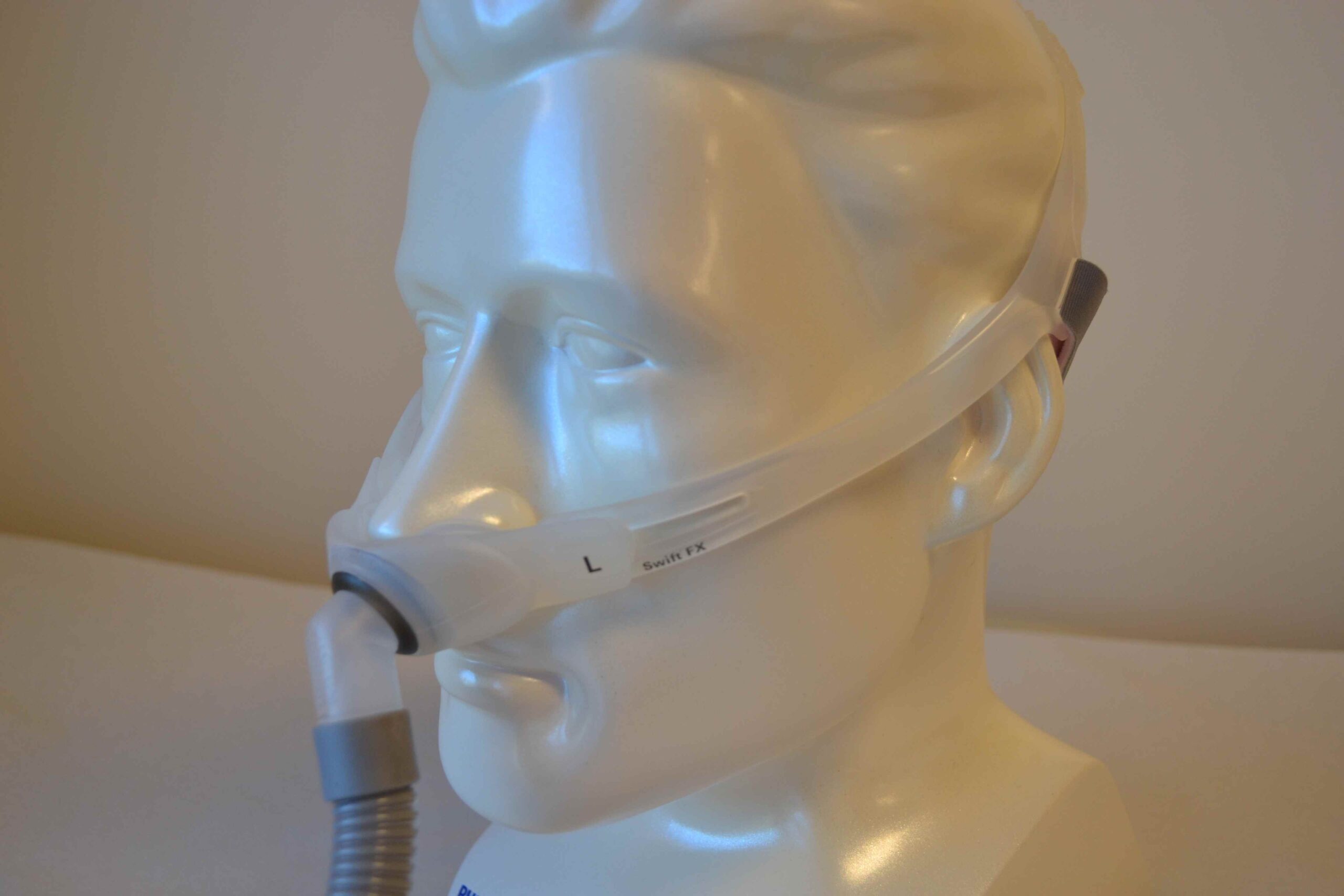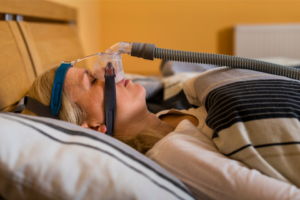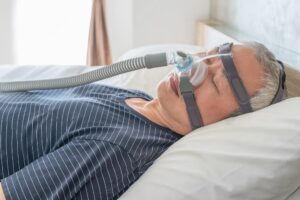Sleep apnea is a condition that causes periodic breathing interruptions while you’re asleep. There are several treatment methods available. Continuous positive airway pressure (CPAP masks) treatment is a popular alternative that uses a machine and mask to assist control breathing while you sleep. What you need to know about selecting the ideal mask for you is provided here.
Selecting the Correct Mask
Sleep apnea comes in three different forms:
In obstructive sleep apnea, the muscles in your mouth or airway collapse, physically preventing you from breathing. In central sleep apnea, the brain impulses that govern breathing are disrupted. In mixed sleep apnea, both obstructive and central sleep apnea are present.
Obstructive sleep apnea is commonly treated with cpap masks devices and sleep apnea masks. By increasing the air pressure in your throat, these devices help you breathe through the night by keeping your airways open.
The next step after receiving a sleep apnea diagnosis is to begin treatment, which may include using continuous positive airway pressure (CPAP masks). You may be wondering how to locate and choose the finest CPAP masks. You have a lot of alternatives, but you may avoid feeling paralyzed by following a few simple rules. Learn more about uncommon necessary CPAP mask tips.
Select a CPAP masks Mask Style That Is Right for You
In general, CPAP masks is designed to provide a steady stream of air that supports and maintains the opening of your upper airway, avoiding apnea and snoring.
Your choice may depend on your particular demands, and this air may be administered by your mouth, nose, or both.
The majority of individuals use a mask that allows air to enter their nose. The majority of nasal masks are made of a triangular-shaped gel or plastic cushion that covers the nose and sits just below the nostrils. A headpiece, often made of fabric, Velcro, or plastic clips, will be attached to this to keep the mask on your face. The CPAP masks machine itself will be connected to the mask via a plastic hose at the end.
Masks come in a wide range of varieties, which often combine creativity with marketing. Many masks also come with a brace that adds a few contact points on the forehead to ease pressure. To avoid leaks or leaving markings on your face, additional cushions or seals could be used. Even some masks are made to float on an air cushion.
However, there are still more interesting choices. One consists of nasal pillows, which are generally plastic inserts that are put into the nostrils and resemble headphone earbuds. If you have claustrophobia or don’t like the mask leaving markings on your face, they are a great alternative. However, not everyone may find them to be comfortable.
Some other masks can accommodate those who mouth breathe since they are big enough to cover the mouth and nose. It can stop dry mouth. Even masks that cover the eyes and the complete face are available. While administering CPAP masks therapy, other mask interfaces may improve jaw alignment by acting as a mouthpiece.

Receive the Proper Size Fitting
In the course of a sleep study, sometimes referred to as a titration study, the majority of participants are equipped with a mask.
This study’s objectives are to introduce you to CPAP masks, show you a few mask interface choices, decide the right size, and give you a chance to test it out while the pressure setting is chosen.
The personnel who conduct sleep studies often have a preferred group of masks that are effective for the majority of users. They’ll probably test them out on you first. Ask for more selections and, more crucially, request a different size without hesitation. They should be willing to assist you, whether it’s at a sleep study, sleep clinic, or the supplier of your equipment for durable medical equipment.
The majority of mask interfaces are available in a variety of sizes, depending on the manufacturer. It’s possible to get plastic size templates. Some masks may come in beneficial modifications like “wide” as well as intermediate sizes like “medium-small.” Try to choose a mask that is big enough to give enough air. Avoid using oversized masks that could slip on your face or leak excessively.
Make sure to test it out when it is connected to a device that is producing the appropriate amount of air pressure. Don the protective gear to fully enjoy the experience.
Utilize accessories that might ease compliance
In addition to finding the right design and fit, you may want to look at some of the various CPAP masks accessories that improve treatment compliance.
Both the mask interfaces and the headgear that is used to keep the CPAP masks mask on your head may have a wide range of capabilities. Many are constructed from washable cloth. Velcro may be used on some to adjust the fit. Others could include plastic quick-release clips that enable simple on and off and proper fitting after the first time. As a result, you won’t need to continually tweak it to obtain the ideal fit each time you use it.
Try wearing a chinstrap if you often find yourself inhaling through your mouth.
The majority of individuals find it beneficial to use a heated humidifier that is either linked to or integrated into their CPAP masks machine. Additionally, heated tubing is available to keep the tube dry and free of condensation.
A machine with a ramp function, which begins at a low pressure and gradually rises up to your treatment pressure over a predetermined length of time, may be what you need if you have problems tolerating the pressure as you go off to sleep.
You may want to consider adding a mask liner if the plastic irritates your skin or if you are having difficulties obtaining a proper seal without significant air leak. Additionally, there are padding and cushions that help enhance the mask’s fit.

You have a wide range of practical alternatives at your disposal, which may improve your quality of life and increase the likelihood that you’ll follow the recommended course of action.
There are several varieties of sleep apnea masks since every person’s situation is unique.
According to Alex Savy, Certified Sleep Science Coach and Founder of SleepingOcean, “there are three primary kinds of masks: full-face, nasal masks, and nasal pillow masks.”
Full-face masks
Full-face masks may be somewhat large since they cover the nose and mouth. This style is often advised for back sleepers since they might be challenging to use while resting on the side, according to Savy.
According to the American Association of Sleep Technologists, full-face masks are excellent for persons who need greater pressure CPAP masks settings or who either breathe via their lips.
Nasal Masks
Nasal masks normally reach from the bridge of the nose to the upper lip, according to the American Association of Sleep Technologists. Through the nasal passages, these kinds of masks provide an indirect, more natural airflow to the airway. Additionally, they are useful for individuals who want settings for comparatively greater air pressure.
Nasal pillow masks
The nasal pillow mask goes over the nostrils to facilitate nasal breathing. According to the Mayo Clinic, nasal pillows are a suitable option if you have facial hair that might get in the way of other masks or if you become claustrophobic easily.
You should also take into account how you sleep. A full-face mask would work best if you sleep on your back since any other position would compromise the seal. A nasal mask can be the best option if you sleep on your side or move around a lot when you’re asleep.
Regardless of the mask you use, it’s critical to identify and address any sleep problems like sleep apnea. Sleep apnea increases the risk of significant health problems including cardiovascular disease and stroke in the absence of treatment.




